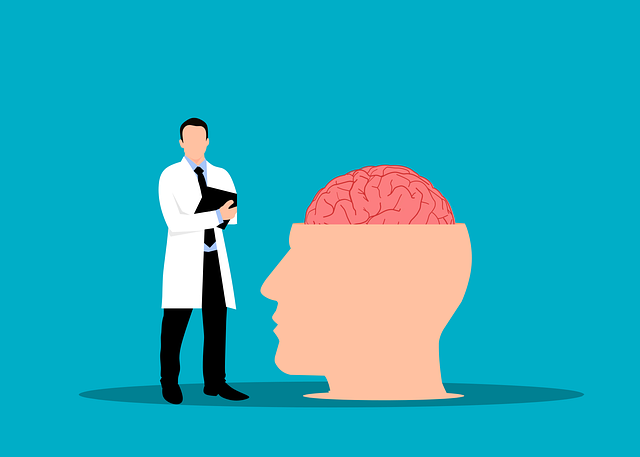Recovery after a traumatic brain injury is often measured in physical milestones, walking again, regaining speech, or returning to work. Yet for many patients, the most lasting scars are invisible. They don’t lie in movement or memory but in the sudden surges of emotion that seem to have a life of their own. As one of the best neurologists might say, “the brain may heal, but emotional balance doesn’t always follow.” This hidden consequence of head trauma, called emotional dysregulation, is one of neurology’s most complex and least discussed challenges.
When the Emotional Circuitry Breaks
Every human emotion joy, anger, sadness, fear is controlled by a delicate interplay of neural networks in the brain. The frontal lobes act as emotional regulators, ensuring we respond to situations with appropriate intensity. The limbic system, especially the amygdala, generates raw feelings and impulses. When a traumatic brain injury disrupts these circuits, the balance between emotion and control is lost.
A patient who was calm and patient before the injury might now explode in anger over small inconveniences. Another may burst into tears for no apparent reason or laugh uncontrollably during serious conversations. These emotional shifts are not personality flaws; they are signs that the brain’s control system has been rewired.
In some cases, the damage is microscopic axons stretched or sheared during impact but the effect on behavior is enormous. The brain, much like a musical orchestra, can’t play in harmony when even one section falls out of rhythm.
The Misunderstood Side of Brain Recovery
One of the cruelest aspects of post-TBI emotional dysregulation is how misunderstood it is, even by loved ones. Family members often perceive these outbursts as rudeness or immaturity, unaware that the person no longer has full command over their emotional responses.
Patients themselves feel trapped inside their bodies, fully aware that their reactions are disproportionate yet powerless to stop them. “I know I’m overreacting,” one patient shared during therapy, “but it’s like watching someone else take over my mind.”
Such moments create shame, guilt, and social isolation. Over time, this emotional rollercoaster can trigger anxiety and depression, worsening the brain’s already fragile chemistry. These reactions are not only neurologically rooted but psychologically exhausting.
The Science of Overstimulation and the Breaking Point
A brain recovering from trauma is hypersensitive to stimuli. Lights seem brighter, sounds louder, crowds more suffocating. This sensory overload can rapidly lead to anger, panic, or emotional meltdown. The neural pathways responsible for filtering irrelevant information in the thalamus and frontal regions become inefficient after injury. As a result, the brain receives more data than it can handle, and emotions surge uncontrollably.
This connection between overstimulation and emotional dysregulation parallels what’s discussed in this detailed article on understanding overstimulation, anger, and panic attacks. Both conditions show how an overwhelmed nervous system can magnify normal reactions into explosive ones. In post-TBI patients, the threshold for emotional overload is dramatically lower meaning even minor stressors can ignite intense responses.
Why Feeling Too Much Is a Neurological Condition
Emotional dysregulation isn’t just about losing temper control; it’s about neurological disconnection. The pathways that once linked reasoning areas of the brain to emotional centers are disrupted. When these “brakes” fail, emotions flow without moderation.
Neuroscientists have identified two key factors that amplify this phenomenon:
- Neuroinflammation, which alters neurotransmitter balance (especially serotonin and dopamine).
- Reduced inhibitory control, due to damage in the prefrontal cortex.
Together, they create a brain environment where every feeling feels extreme situation often described by survivors as “feeling too much.” Some even develop pseudobulbar affect, a condition where laughing or crying occurs involuntarily and uncontrollably.
Unlike mood disorders that stem purely from psychological origins, these responses have structural causes. MRI scans of such patients often reveal changes in connectivity patterns across frontal and limbic regions, physical evidence of why emotions go off-script.
Life Behind the Mask
People living with emotional dysregulation after brain injury often wear masks in social settings. They hide their irritability or sadness to avoid judgment. But suppressing these emotions requires enormous mental effort, leaving them drained by day’s end. Many compare it to constantly walking on thin ice, never knowing when an emotional crack might appear.
The invisible nature of this disorder makes it hard for workplaces, schools, or families to accommodate. While physical rehabilitation gets sympathy, emotional instability is stigmatized. Yet, both originate from the same source of damaged neural wiring.
A person might recover motor control and speech, only to lose friends because they appear “different.” The cost is deeply human: loneliness, frustration, and self-doubt.
The Interplay Between Stress and the Injured Brain
Chronic stress is particularly toxic for a brain that has endured trauma. It keeps the nervous system in a state of constant alert, making emotional regulation even harder. The injured brain, already struggling to interpret sensory and emotional data, becomes overwhelmed by stress hormones like cortisol.
This is why many patients experience worsening symptoms in noisy, crowded, or emotionally charged environments. Everyday triggers- a honking car, a disagreement, an unexpected change can cause an overreaction, followed by deep regret. Neurologists often describe this as a “short-circuit” response, where the brain skips rational processing and jumps straight into fight-or-flight mode.
Understanding these dynamics is crucial for families and caregivers. When they recognize that emotional dysregulation is a neurological event, not a behavioral failure, empathy replaces frustration.
Healing Beyond Medication
Treating emotional dysregulation requires a multidisciplinary approach. While medications like SSRIs or mood stabilizers can help rebalance neurotransmitters, they address only part of the problem. True recovery lies in retraining the brain’s response patterns.
Neuropsychological rehabilitation focuses on restoring inhibitory control through cognitive exercises. Patients learn techniques to pause before reacting effectively rebuilding the brain’s internal “braking system.” Over time, these small victories accumulate into greater emotional stability.
Mindfulness and sensory regulation practices also play a transformative role. By teaching the brain to focus on present sensations rather than spiraling thoughts, mindfulness reduces emotional volatility. Breathing techniques, progressive muscle relaxation, and grounding exercises help calm the hyperactive amygdala, the brain’s emotional alarm center.
Therapists often encourage “sensory diets” ,planned exposure to stimuli helping patients gradually expand their tolerance. This approach mirrors physical therapy, but for the nervous system.
A Human Perspective: Redefining Recovery
Recovery from traumatic brain injury isn’t about returning to the person you once were; it’s about learning to thrive with the brain you now have. Emotional dysregulation doesn’t make someone “broken”, it makes them human, navigating an unfamiliar neurological landscape.
For caregivers and families, patience and education are vital. Each emotional outburst is not defiance but a neurological echo of trauma. Recognizing the signs early and seeking neurological evaluation can make an enormous difference. Support groups, therapy, and structured rehabilitation can transform what feels like chaos into manageable rhythms.
Over time, many patients find their emotions regain rhythm slower, steadier, and more predictable. The goal is not to erase emotion but to reclaim harmony.
Conclusion
Emotional dysregulation after traumatic brain injury reveals the profound link between the brain’s structure and our sense of self. When this link fractures, emotions cease to be predictable, they become raw, amplified, and exhausting. Yet understanding this condition through a neurological lens transforms frustration into compassion and despair into strategy.
Through personalized care, therapy, and mindful retraining, patients can learn to live in sync with their recovering brains. The journey demands patience and awareness, both from the survivor and those who stand beside them.
Neurology reminds us that healing isn’t only about neurons reconnecting, it’s about rediscovering the emotional balance that makes us human. The brain may be fragile, but with understanding and support, its resilience is extraordinary.








Leave a Reply